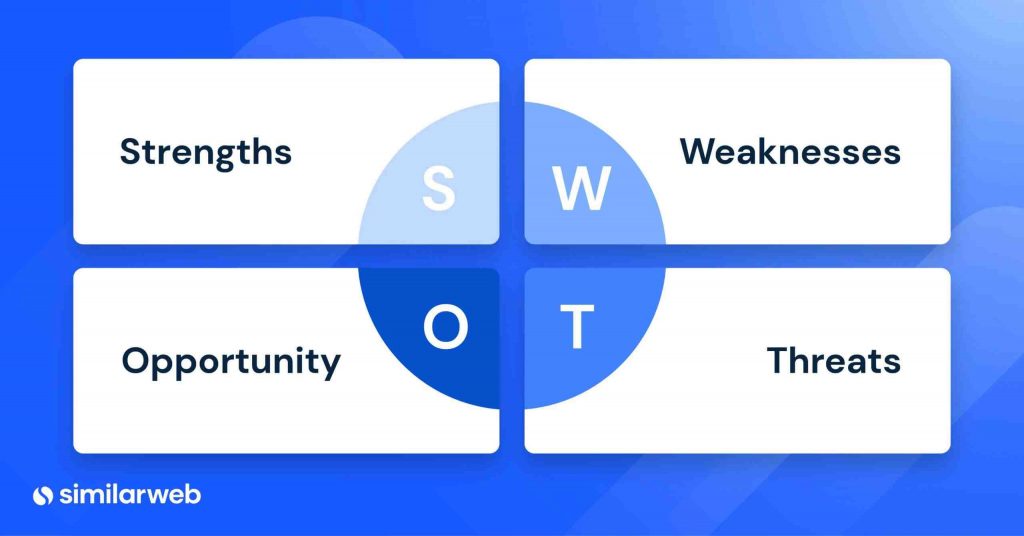For most organizations, implementing an effective SEO (search engine optimization) strategy involves collecting and analyzing significant amounts of keyword, content, analytics and competitive data from a variety of sources.
SEO professionals must then use this data to prioritize keyword, content, structural and/or link assignments to address issues or build on existing organic search authority.
The SWOT (Strengths, Weaknesses, Opportunities, Threats) framework is one popular method of prioritization, which greatly helps to focus and maximize limited SEO and marketing resources.
SWOT, by definition, is aimed at helping to identify items that could have the greatest impact on growth – or the most dangerous threats.
The following breakdown of the organization’s SEO priorities assumes that keyword research has already been done and is being used for the website, SERP (Search Engine Results Page), and competitive data, which will form the basis of an effective SWOT.
Keyword research alone often deserves its own SWOT process.
Strengths
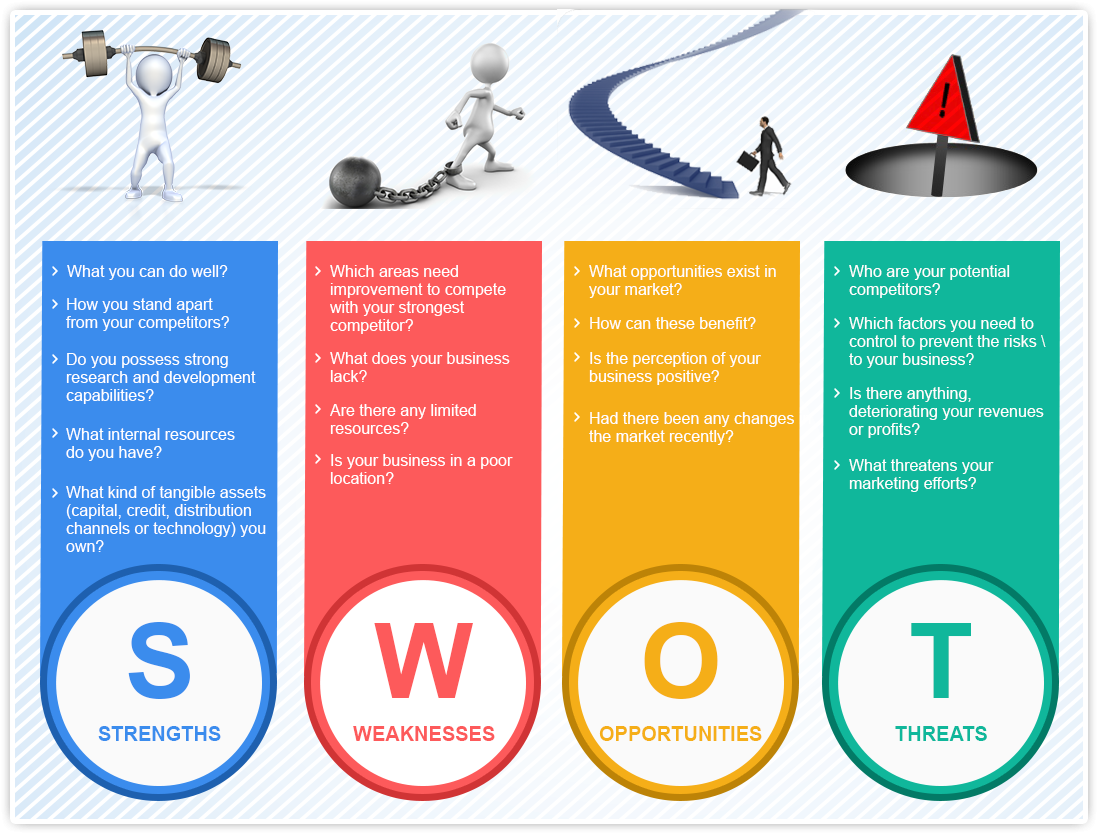
One of the main factors that search engines use to determine your organic search visibility is the relative strength and authority of an organization for a topical group of keywords.
A great place to start is focusing your attention on those keywords that the organization already has some authority over – or as some like to call “momentum” in the eyes of the search engines. .
Authority is generally hard to come by and takes time to establish, so why not build on what you already have.
Your first question should be, “Which pieces of content do I have that rank well (let’s say in the top 20 results) in the search engines for my main keyword groups?”
There are three ways to recognize that you already have strength:
Searchers who land on your home page looking for something specific will have to spend more time clicking or searching again to get an exact answer to their question.
Identify the pages you have that provide answers, and focus on applying them to the site currently maintained by the home page.
If you determine that such pages do not exist, it is time to create them.
Be sure to also pay attention to the types and characteristics of your strongest pieces of content as indicators of what content to create moving forward.
For example, if your videos rank well on Google and/or YouTube, by all means create more videos.
If long blog posts are impacting the top search results for your primary keywords, this is your cue to publish and share more of them.
Weaknesses
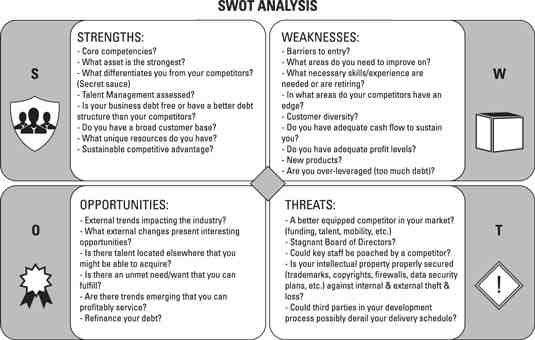
We all have our weaknesses; when it comes to SEO, recognizing them and letting them in early can save us a lot of effort, time, money and lost business.
Keywords And Content
While there are definitely keyword groups that we think need to be found, it’s important to let go of those that require too much time and/or effort to establish authority.
In general, a quick review of search engine results will reveal unrelated keywords based on the size, age, reputation and quality of your competitors’ content.
In this case, it may be necessary to look at the more specific options of long-tail and intent-driven keywords or consider other ways (including paid ways) to generate visibility, traffic and conversions.
Sometimes, the best strategy is to use complementary paid search tactics until you can establish organic search authority.
Technical Audit
Another area of weakness, which you can easily control, may be the quality of your website and content itself from a technical/structural point of view, keyword relevance, or depth.
You can start to identify areas of weakness by doing an SEO audit.
There are a number of excellent free and paid tools available, including Google Lighthouse and Search Console (specifically the Core Web Vitals Report and Mobile-Friendly Test), which will provide a prioritized list of issues and/or errors found in the tags titles and headings, internal and external links, website code, keyword usage/density, and a host of mobile-friendly factors.
Screenshot of Lighthouse in Chrome Dev Tools, July 2022
As mentioned above, you should start by focusing on any queries found on those pages where you already have some authority and ranking them based on search engine results.
Optimizing these pages can only help improve their chances of moving up the SERPs.
You can move on to other priority web pages based on website analytics data or strategic importance.
Backlinks
Quality, relevant, organically obtained backlinks (or inbound links) are still a search engine ranking factor as they speak to the authority of the site they link to, and can improve.
As with site auditing, many good third-party backlink tools can reveal where you are maintaining backlinks. These are especially useful for looking at the backlink sources of your strongest competitors.
When appropriate, you may want to reach out to get links from the same relevant sources to leverage their authority.
Opportunities
In SEO, there are many opportunities for those who know how, where, and take the time to look.
SEO is really about moving from one opportunity to another.
When optimizing for one group of keywords or pieces of content is deemed successful, it’s time to move on to the next content that can establish or boost authority.
Keywords And Content
Some keyword research tools like Ahrefs, Semrush, and others can provide keyword opportunities and content or gaps based on your website’s domain, domains of known competitors, or a targeted keyword list.
Most provide prioritized lists of potentially high-value keywords based on estimated monthly search volumes, organic traffic, and/or relative competition.
In other words: What high-value keywords are your competitors ranking for that you’re not?
As with the Weaknesses above, part of this analysis should consider the level of effort required to gain authority relative to the potential outcome of establishing organic visibility.
Screenshot of the Semrush Keyword Gap tool, July 2022
Or, spend some time reviewing the original pages of your top competitors, paying particular attention to the keywords used in title tags, headings, and internal link anchor text.
These are probably the most important keywords for them.
Be careful, though, because this strategy assumes that the competition has done their own keyword research and is following SEO best practices, which may or may not always be the case.
Those competitors who rank well for the primary keywords associated with those who are intentionally optimizing for search should be targeted.
Content Refresh
Another opportunity within a web presence is to refresh top-performing or complementary content.
First, scan the SERPs or select a keyword tool to identify older content that ranks for target keywords or that serve to support other primary content pages.
Next, review this content to see where there are opportunities to update text, images, internal/external links, or any other components.
There may be an opportunity to enhance the piece by creating and adding images or videos.
Finally, redistribute this content through appropriate channels, and perhaps consider identifying new channels – as a previously popular piece of content is likely to do well again.
Existing content offers a great opportunity to build authority, often with little extra effort.
Backlinks
Although it is usually a labor intensive process, seeking backlinks has long-term value.
Ideally, you want to identify relevant, authoritative websites/domains from which to get high-quality inbound links.
There are several sources you can use to start looking for inbound links:
The SERPs are a natural starting point for backlink research for the primary keywords, as the search engines consider the websites found here to be “relevant” and “authoritative”.
Those sites that are ahead of yours are of particular interest because they probably have a higher authority that you can trust.
Look for any non-competitive backlinking opportunities such as directories, association lists, or articles and blog posts that you might be able to contribute to, be quoted in, or comment on.
The Google Search Console Link Report is the next best resource for backlink research, as it shows what Google recognizes as the domains that link to your content.
Here you can validate the quality and accuracy of your existing links, as well as determine if there are any other opportunities to get additional links from these same domains.
Referral sources in Google Analytics represent external sites that send you traffic but may or may not be providing an organic search boost.
Please review these domains/sites regularly to see other linking opportunities.
4. As noted under Weaknesses, some third party backlink tools can be used to identify potential backlink sources where links to your competitors can be found.
Some will even help by ranking authority and prioritizing the value of all current and potential sources, saving significant time.
Threats
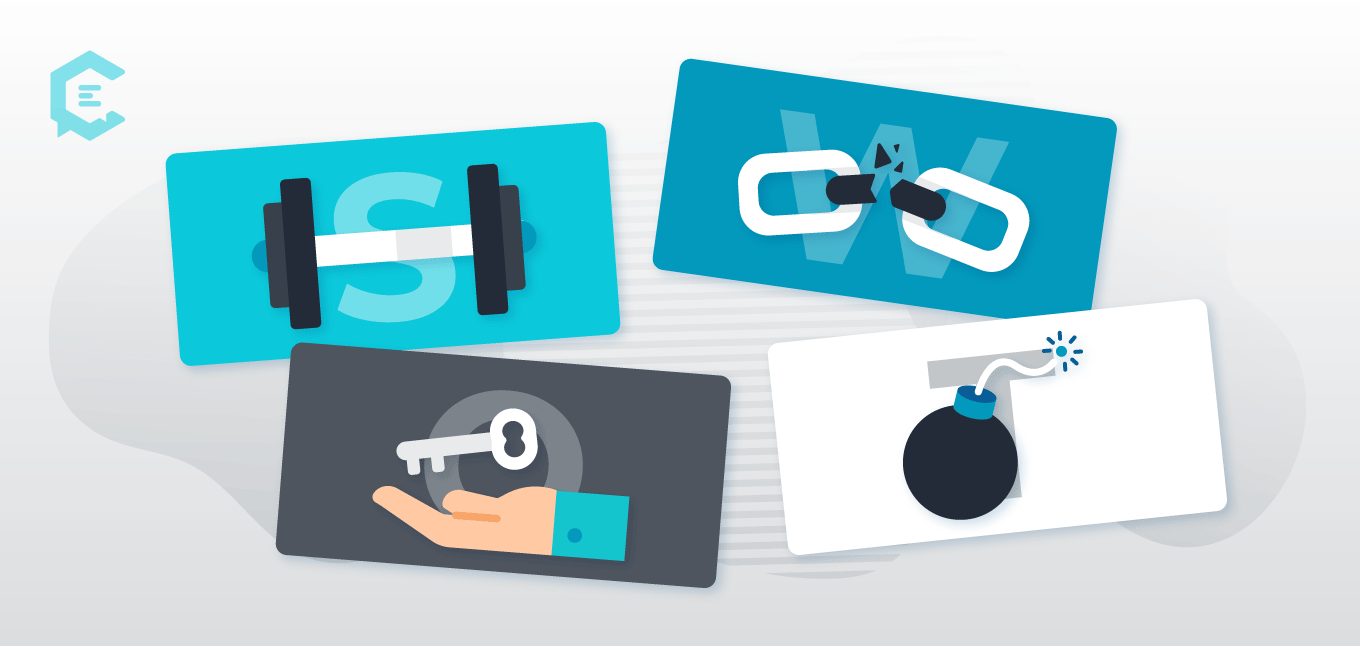
Whether done intentionally or not, there are more than a few things that can threaten organic authority in the eyes of search engines and should be prioritized for potentially damaging penalties. avoid
Content
The main content threat that most people are familiar with is duplicate content, which is, as the name suggests, content that has been reposted to a website without proper attribution to the original source.
To avoid being penalized for using this type of content, you must be sure to include canonical rel tags by referencing the original content in the headers of pages containing duplicate content.
In other words: It’s okay to have duplicate content on a website, as long as the original source is properly identified.
Backlinks
While relevant, quality backlinks can help boost your authority, irrelevant, low-quality inbound links from disreputable sites (especially those that are part of paid link schemes) can do long-term harm. do and even tag you with a manual. penalty.
The threat here is potential loss of organic visibility and traffic.
Additionally, recovery from manual punishment is not an easy or quick process.
Simply put, you should never pay for backlinks and make sure that any backlinks you get have not been bought for you by a third party, such as a marketing agency.
Therefore, you should regularly review the Google Search Console Links report or other backlink reporting sources for suspicious domains or those that you do not recognize as relevant.
Competitors
All online competitors who create their own content are threats to your authority.
Even if you maintain strong organic visibility and traffic relative to your “known” competitors, new, aggressive or unknown competitors could always enter the scene.
Many of the aforementioned SEO tools provide competitor discovery tools to help quickly identify domains that consistently appear in the search results for your keywords.
Often, there may be competitors here that you never thought of. Of course, you’ll want to pay attention to these competitors and use the above tactics to see what you can learn from them.
Search engines love and reward fresh, relevant content, and even Google has a fresh algorithm to identify it.
Therefore, you should regularly monitor the search engine results for new entrants, who may, over time, challenge your authority and position.
Of course, the best way to combat this kind of threat is to keep publishing and updating your own comprehensive content, which will give search engines less reason to question your authority.
Actioning On The SWOT
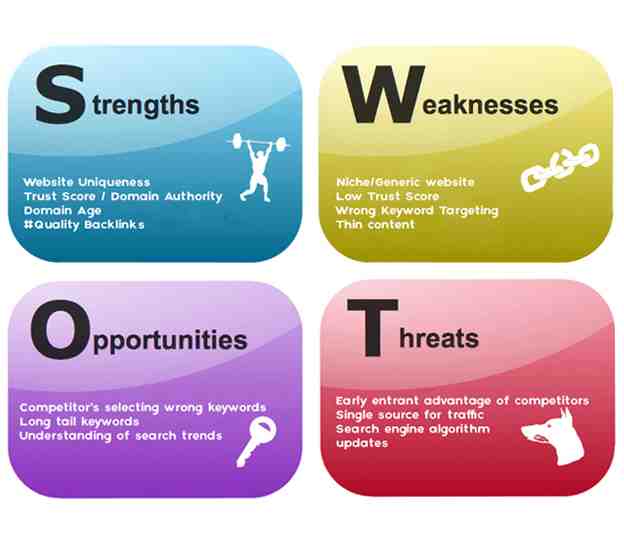
The detailed SWOT outputs will map priority actions to protect and/or improve online authority, visibility, and resulting traffic, leads and revenue.
Proactive search marketers should perform these analyzes on a bi-annual basis, if not at least quarterly, depending on the competitiveness of the industry and how active the competitors are.
A well-structured SWOT can provide an excellent roadmap for where, when and how often to take action or create and share content to boost the organization’s key SEO goals.
Featured Image: Rawpixel.com/Shutterstock
When your SEO strategy works, your website’s rank improves, which means more visitors will find your pages in search results. With wider exposure and traffic to your high-value content, more sites will link to your pages, increasing your authority and credibility, resulting in the improvement of your website.
What are the characteristics of Internet of Things?
Seven characteristics of IoT
- Connectivity. This doesn’t need too much explanation. …
- Things. Anything that can be tagged or linked as such because it is designed to be linked. …
- Details. …
- Communication. …
- Intellect. …
- Action. …
- Ecosystem.
What are the characteristics of IoT Mcq? Intelligence, scalability, security, heterogeneity are the characteristics of IOT.
Which of the following is a are characteristics of an IoT application?
Open Source and Pluggable and Scalable are the characteristics of IoT applications.
What is IoT and its characteristics?
Definition of IoT (Internet of Things): IoT is a global dynamic network infrastructure of physical and virtual objects with unique identities, embedded with software, sensors, actuators, electronic and network connectivity to facilitate smart applications by collecting data and to exchange.
Which of the following is not a characteristic of the IoT?
Solution (By Examveda Team) Providing information is not a characteristic of the Internet. The Internet is essentially a decentralized, self-sustaining telecommunications network. It is made up of small interconnected networks from all over the world.
What are the 4 elements of IoT?
However, all complete IoT systems are the same in that they represent the integration of four distinct components: sensors/devices, connectivity, data processing, and user interface.
How many elements are there in IoT?
(a) Three basic elements of IoT: sensors or power-constrained hardware devices to detect and receive the data, middleware to process, analyze and transmit the required data, and an application that visualizes the data and processed fruits.
What is SWOT example?
Examples include competitors, raw material prices, and customer shopping trends. A SWOT analysis organizes your best strengths, weaknesses, opportunities and threats into an organized list and is usually presented in a simple two-by-two grid.
What is the definition of SWOT? A SWOT analysis is a framework for identifying and analyzing an organization’s strengths, weaknesses, opportunities and threats. These words are the acronym SWOT. The main goal of the SWOT analysis is to increase awareness of the factors involved in making a business decision or establishing a business strategy.
What are examples of threats?
Threats refer to factors that may harm an organization. For example, a drought is a threat to a company that produces wheat, because it can destroy or reduce the yield of the crops. Other common threats include things like rising costs of materials, increased competition, tight labor supply. and so on.
What is SWOT pest strategy?
SWOT & PEST analyzes are two methods by which companies plan ahead by conducting research. PEST analysis refers to Political, Economic, Social and Technological factors that influence the business environment. SWOT analysis refers to Strengths, Weaknesses, Opportunities and Threats.
What are SWOT threats examples?
Examples of threats to a personal SWOT analysis include increased competition, lack of support, or language barriers. Examples of threats to businesses include an economic downturn, increased taxes, or losing key staff.
What is SWOT analysis and examples?
SWOT stands for Strengths, Weaknesses, Opportunities and Threats. Your company’s strengths and weaknesses are things that you have some control over and can change. Examples include who is on your team, your patents and intellectual property, and your location.
What is SWOT matrix?
SWOT analysis (or SWOT matrix) is a strategic planning and strategic management technique used to help a person or organization identify Strengths, Weaknesses, Opportunities and Threats related to business competition or project planning.
What is an example of a strength used in a SWOT analysis?
1. Technological advantage. If you have a technological advantage over any other competitor it is a great strength for you. The top few technology leaders of the century have a technological advantage over each other.
What is an example of a strength in a business?
Some examples of strengths include: Strong employee attitudes. Excellent customer service. Large market share.
Is strength part of the SWOT analysis?
Use a SWOT (strengths, weaknesses, opportunities, threats) analysis to grow your business. A SWOT analysis is a compilation of your company’s strengths, weaknesses, opportunities and threats.
What are internal strengths examples?
An example of internal strengths might be an organization’s solid financial base, a well-trained workforce, or high-tech equipment. These are all great examples of organizational strengths. Upper management should always be forward thinking and set goals that take advantage of the organization’s strengths.
What are examples of strength in SWOT analysis?
In a SWOT Analysis, strengths are written in the upper left quadrant. They highlight the internal strengths that you or your organization could use to achieve your goals. Examples of strengths for a SWOT analysis include motivation, a clear vision, or strong foreknowledge.
What are SWOT threats examples?
Examples of threats to a personal SWOT analysis include increased competition, lack of support, or language barriers. Examples of threats to businesses include an economic downturn, increased taxes, or losing key staff.
What are examples of SWOT opportunities?
Examples of opportunities for SWOT analysis include training, internships, or career moves. Examples of opportunities for businesses include market growth, new technologies, or new investments.
What are opportunities and threats in SWOT?
Opportunities and threats are external things that take place outside your company, in the larger market. You can take advantage of opportunities and protect against threats, but you cannot change them. Examples include competitors, raw material prices, and customer shopping trends.
What is an SEO strategy?
SEO strategy is the process of organizing website content by topic to improve the likelihood of appearing in search results. Basically, it is the process you follow to maximize the opportunity to get organic traffic from search engines.
What is SEO marketing for beginners? SEO stands for “search engine optimization.” It is the practice of increasing the quality and quantity of website traffic, as well as exposure to your brand, through unpaid (also known as “organic”) search engine results. . Despite the acronym, SEO is as much about people as it is about search engines themselves.
What is SEO marketing?
SEO stands for “search engine optimization,” but to fully answer your question, the simple meaning of SEO in marketing your business is the process of improving your website so that search engines are more likely to show up like Google your business in user search results.
What is the SEO in marketing?
SEO marketing is a subset of digital marketing that involves optimizing websites and web pages for major search engines like Google.
What is SEO in simple terms?
SEO stands for search engine optimization, which is a set of practices designed to improve the appearance and positioning of web pages in organic search results.
What are the 4 steps of SWOT analysis?
Strengths, Weaknesses, Opportunities and Threats The purpose of this step is to identify all the internal and external factors that affect your work.
What are the three stages of the LLDB analysis? A. identifying the strengths and weaknesses of the company’s resources and its opportunities and threats, reaching conclusions about the overall situation of the company, and translating the conclusions into strategic actions to improve the company’s strategy.
What are the four types of strategies in SWOT matrix?
An important matching tool is the Strengths-Weaknesses-Threats (SWOT) Matrix that helps managers develop four types of strategies: SO strategies (strengths-opportunities), WO strategies (weaknesses-opportunities), ST strategies (strengths-threats), and WT strategies (weaknesses-threats).
What are the four strategies of SWOT analysis?
This set of four elements – strengths, weaknesses, opportunities and threats” is often called a SWOT analysis when used by a business to gain a competitive advantage.
What strategy is used in SWOT analysis?
A two-by-two matrix is used to construct a SWOT analysis, which consists of horizontal pairings of internal (strengths and weaknesses) and external (opportunities and threats) factors and vertical pairings of helpful (strengths and opportunities) and harmful (weaknesses and threats) factors with an objective to achieve.
What are the components of SWOT matrix analysis?
Components of SWOT Analysis The components of SWOT analysis are strengths, weaknesses, opportunities and threats. According to the Community Toolbox, strengths and weaknesses evaluate an organization’s internal environment.
What is SWOT matrix?
SWOT analysis (or SWOT matrix) is a strategic planning and strategic management technique used to help a person or organization identify Strengths, Weaknesses, Opportunities and Threats related to business competition or project planning.

